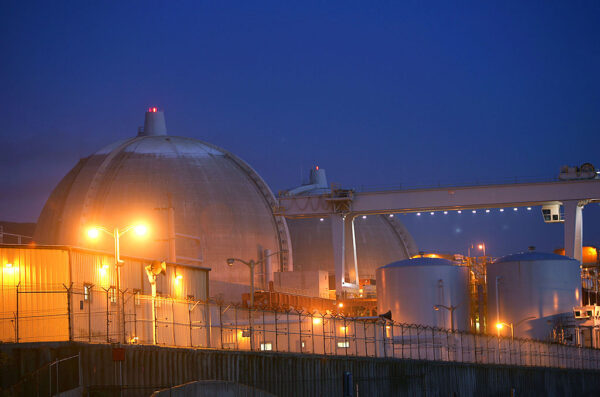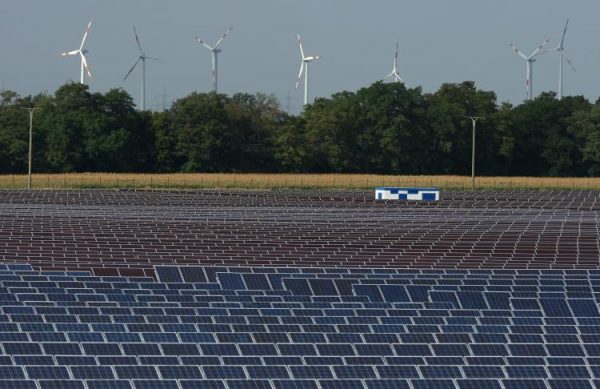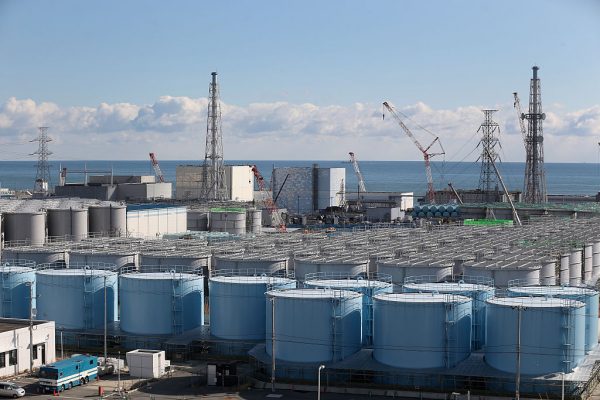Without Nuclear Power Green Energy Costs Will Skyrocket, Experts Claim
Distressed Patriotic Flag Unisex T-Shirt - Celebrate Comfort and Country $11.29 USD Get it here>>

As the United States transitions to renewable energy, experts say costs could increase exponentially.
Nuclear industry organization SMR Start released a 2021 report examining the costs of transitioning the electric grid to renewable energy.
It found that the effective cost of covering demand using only solar would be between $216.4 per megawatt hour and $274/MWh. Wind generation only costs would range from $87.8/MWh to $106.4/MWh.
However, the report said using small modular nuclear reactors decreased energy costs to between $71.57/MWh and $79.73/MWh.
The higher costs are to cover generating for the winter peak.

Similarly, the Massachusetts Institute of Technology (MIT) released an 2018 interdisciplinary study on transitioning the electricity sector to renewable energy.
It concluded that without the contribution of nuclear, “the cost of achieving deep decarbonization targets increases significantly” and in some instances, almost doubled.
Moreover, at the 2022 National Conference of State Legislators, Marcus Nichol, the director of new reactor deployment at the Nuclear Energy Institute (NEI), told state legislators that if the United States doesn’t include nuclear energy as part of the grid mix, energy costs could skyrocket over the coming years.
Nuclear Benefits
According to the NEI, there are 93 nuclear reactors around the United States, and almost 55 percent of the nation’s total carbon-free electricity comes from these reactors.
That’s despite nuclear power only generating 19 percent of the nation’s total electricity.
Nuclear’s ability to provide so much energy—despite not equaling a more significant percentage of the grid—is due to uranium’s energy density.
One uranium fuel pellet provides as much energy as one ton of coal, 149 gallons of oil, or 17,000 cubic feet of natural gas.
In 2020, U.S. nuclear power plants had an average capacity factor of almost 93 percent. Capacity factor measures reliability and tells how often a plant can run at maximum power. If a plant is running at 100 percent capacity factor, it’s producing power all the time.
For comparison, coal has a capacity factor of 49.3 percent, natural gas 54.4 percent, wind generation 34.6 percent, and solar’s capacity factor is 24.6 percent, according to the Department of Energy (DOE).
Finally, concerning emissions, nuclear generation produces approximately 12 g CO2eq (carbon dioxide equivalent) per kilowatt hour throughout its lifecycle.

According to the World Nuclear Association, onshore wind power generates 14.4 g CO2eq/kWh, and photovoltaic power (solar panels) generates 50.9 g CO2eq/kWh.
Pointedly, once you add storing energy in utility-scale lithium-ion batteries—an essential component of transitioning to wind and solar—emissions increase between 70 g CO2-eq/kWh and 300 g CO2-eq/kWh GHG (greenhouse gas emissions).
Simply put, nuclear energy is responsible for more than half of the United State’s carbon-free electricity despite not being widely used and is energy dense. It’s also the most reliable form of energy available and produces fewer emissions over its lifecycle than wind or solar.
But, despite these advantages, the United States hasn’t funded advanced nuclear prototypes to the extent it has wind and solar, according to MIT.
And, negative public perception is leading to the closing of nuclear power plants—since peaking in 1990 at 107, nuclear reactors have steadily declined, according to the Pew Research Center.
Public Support Influenced by Fear
According to a Pew Research Center survey conducted in Jan. 2022, 69 percent of adults support the United States becoming carbon neutral by 2050.
Americans don’t agree on how to accomplish this, however.
Around a third of U.S. adults think the federal government should encourage nuclear.
Two-thirds believe the government should either discourage it, or feel the government should remain neutral on nuclear power development and focus on supporting wind and solar.
Precisely 72 percent of people favor wind and solar, and Pew reports that the public is likely to report favoring oil and gas drilling over nuclear.

The survey found party affiliation impacts a person’s likeliness to support nuclear power.
Specifically, Republicans and GOP-leaning independents are more likely to favor the federal government encouraging nuclear, while Democrats and those more likely to lean Democrat want the government to oppose it (42 percent to 32 percent).
Conservative Republicans are the most likely to favor encouraging nuclear (45 percent), and liberal Democrats are the most likely to favor discouraging nuclear (31 percent).
Pew reports that despite its ability to cut greenhouse gas emissions, policymakers and the public are influenced by incidents such as the 2011 Fukushima Daiichi accident and the 1986 Chernobyl disaster.
Misplaced Alarm?
In March 2022, the United Nations Scientific Committee found that aside from 5000 thyroid cancers (15 of which resulted in death), “There is no evidence of a major public health impact attributable to radiation exposure 20 years after the [Chernobyl] accident.”
Since 2011, there’s been one death attributed to radiation sickness from the nuclear accident at Fukushima. However, approximately 2,313 people died due to the government evacuation.
Conversely, in 2018 eight million people died from fossil fuel pollution, according to new environmental research from Harvard, meaning one in five deaths worldwide is due to burning fossil fuels.

Furthermore, in 2013, NASA reported that global nuclear power prevented 64 gigatonnes of CO2-equivalent (GtCO2-eq) GHG emissions from entering the atmosphere and an average of 1.84 million air pollution-related deaths.
Additionally, it stated: “On the basis of global projection data that take into account the effects of the Fukushima accident, we find that nuclear power could additionally prevent an average of 420,000-7.04 million deaths and 80-240 GtCO2-eq emissions due to fossil fuels by midcentury, depending on which fuel it replaces.”
The report concluded, “By contrast, we assess that large-scale expansion of unconstrained natural gas use would not mitigate the climate problem and would cause far more deaths than expansion of nuclear power.”





